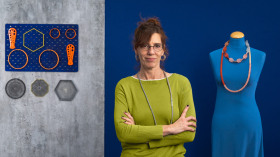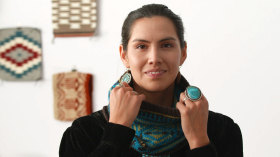How to Become a Jewelry Designer
If you're passionate about creativity and enjoy jewelry, becoming a jewelry designer could be the perfect career for you.
Jewelry design is a unique profession that combines art, craftsmanship, and design into an expression of tangible beauty. This discipline goes beyond creating ornaments; it's a medium through which stories are told, culture is celebrated, and individuality is expressed in an intimate and luxurious manner. If your passion lies in aesthetics, meticulous detail, and constant innovation, the path to becoming a jewelry designer could be your calling.
This post will give you a basic overview of this profession, from understanding the role of a jewelry designer, career opportunities, salary, and some important references if you're passionate about this world.

Career Opportunities
Jewelry designers can work in a variety of settings, including:
Design studios: Many jewelry designers work in independent studios or for established jewelry design companies.
Fashion industry: Some jewelry designers collaborate with fashion designers to create accessories that complement their collections.
Entrepreneurship: Many jewelry designers choose to launch their own brands and sell their creations through online stores, craft markets, or boutiques.

Resources to Get Started
For those interested in becoming jewelry designers, there are several resources available to help them get started:
Jewelry design courses: Many art schools and universities offer jewelry design programs both online and in-person that teach fundamental skills such as drawing, modeling, and manufacturing techniques.
Workshops and seminars: Attending workshops and seminars led by established jewelry designers can be an excellent way to learn new techniques and gain inspiration.
Tools and materials: It's important to invest in quality tools and materials to be able to create high-quality jewelry.
Required Skills
Good eye for detail: Essential for noticing small imperfections and making adjustments. This skill helps to appreciate the beauty of small details in gemstones and metals, ensuring the perfection of each piece of jewelry.
Excellent hand-eye coordination: Crucial for accurately manipulating tools and materials. This includes skills for soldering and creating intricate designs, perfected over years of practice.
Understanding of design principles: Fundamental for jewelry design, it involves a deep appreciation for symmetry, balance, and proportion. It is key to creating aesthetically pleasing, comfortable, and wearable jewelry.
Mastery of computer-aided design (CAD): In today's digital world, CAD knowledge is essential for learning 3D jewelry design and modeling.
Knowledge of jewelry manufacturing techniques: Understanding the intricacies of metallurgy, stone setting, wax carving, and polishing. This experience is vital for creating designs that are not only beautiful but also structurally sound and high quality.

How Much Does a Jewelry Designer Make?
The salary of a jewelry designer can vary depending on their experience, location, and the type of work they do. Experienced jewelry designers working in high-end jewelry can earn significant salaries, while those just starting out may earn less. It's important to research the market and establish competitive prices for your creations.

Inspiration and Industry References
Staying inspired and up-to-date with current trends is crucial in the dynamic field of jewelry design. Here are some figures and influences that every aspiring designer should know:
Jewelry Design Icons: Legendary brands like Cartier, Tiffany & Co., and Bulgari have defined what excellence in jewelry means. Analyzing their collections can offer valuable lessons on quality and design.
Independent Jewelry Brands and Studios: We recommend checking out the work of small independent studios as they offer a very different approach to large jewelry brands. Some of our favorites include: Mia Winston-Hart, Maria La Biyux, and Vattea.
Knowledge and Trends Sources: Specialized magazines, blogs, and digital platforms like Jewellery Focus, The Jewellery Editor, and JCK Magazine are indispensable for any designer wishing to remain relevant.
Online Community and Creativity: Social media and design platforms like Instagram, Pinterest, and Domestika are essential for discovering emerging trends, connecting with other designers, and showcasing your own work.








0 comments